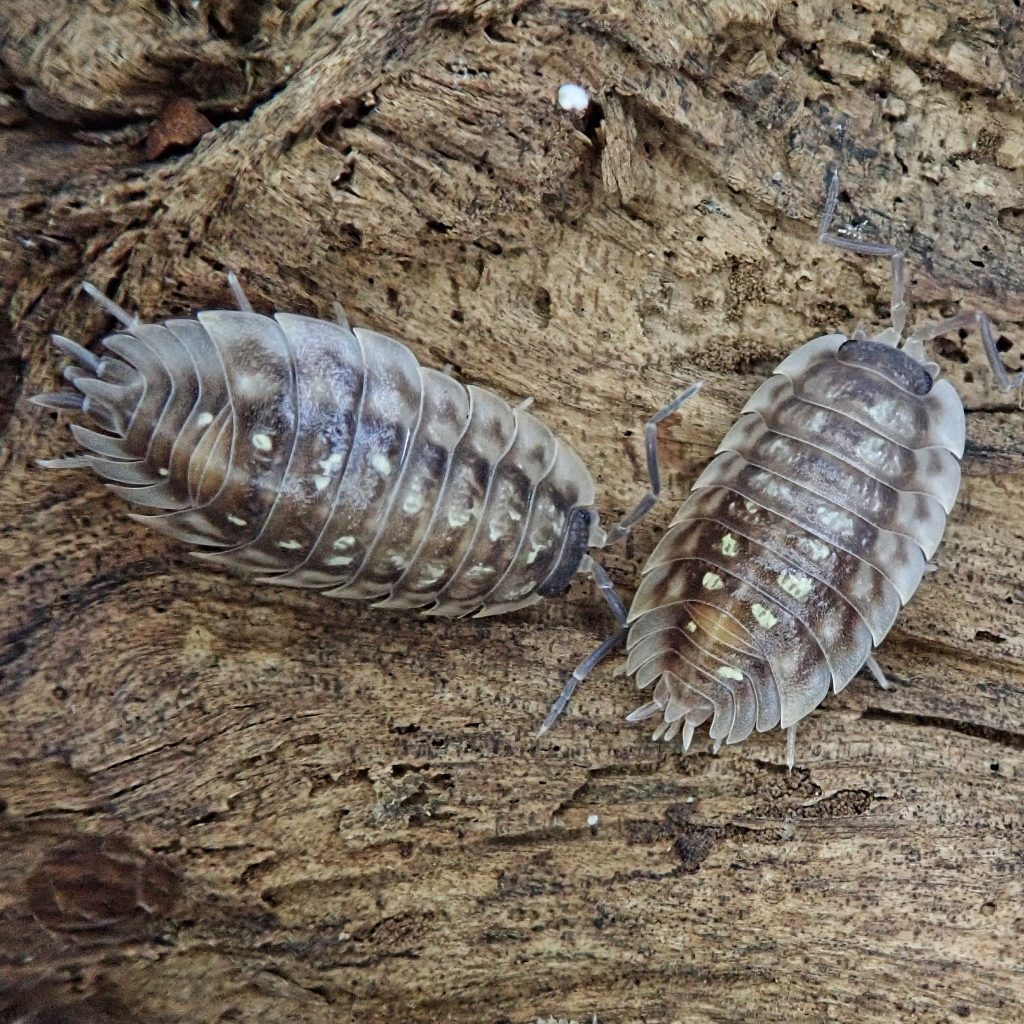
Let’s just get this common name stuff out of the way. Woodlice is the standardized common name for the Oniscidea. The ones that roll into a ball (conglobulate) are in the family Armadillidiidae, and are called pillbugs or rolypolies. The rest of them are commonly called sowbugs. Our present subject, Oniscus asellus, is usually called the European Sowbug in the US, but it is also known as (sowbug can be substituted for woodlouse in all of these); common woodlouse, shiny woodlouse, skirted woodlouse, grey garden woodlouse, and slaters.
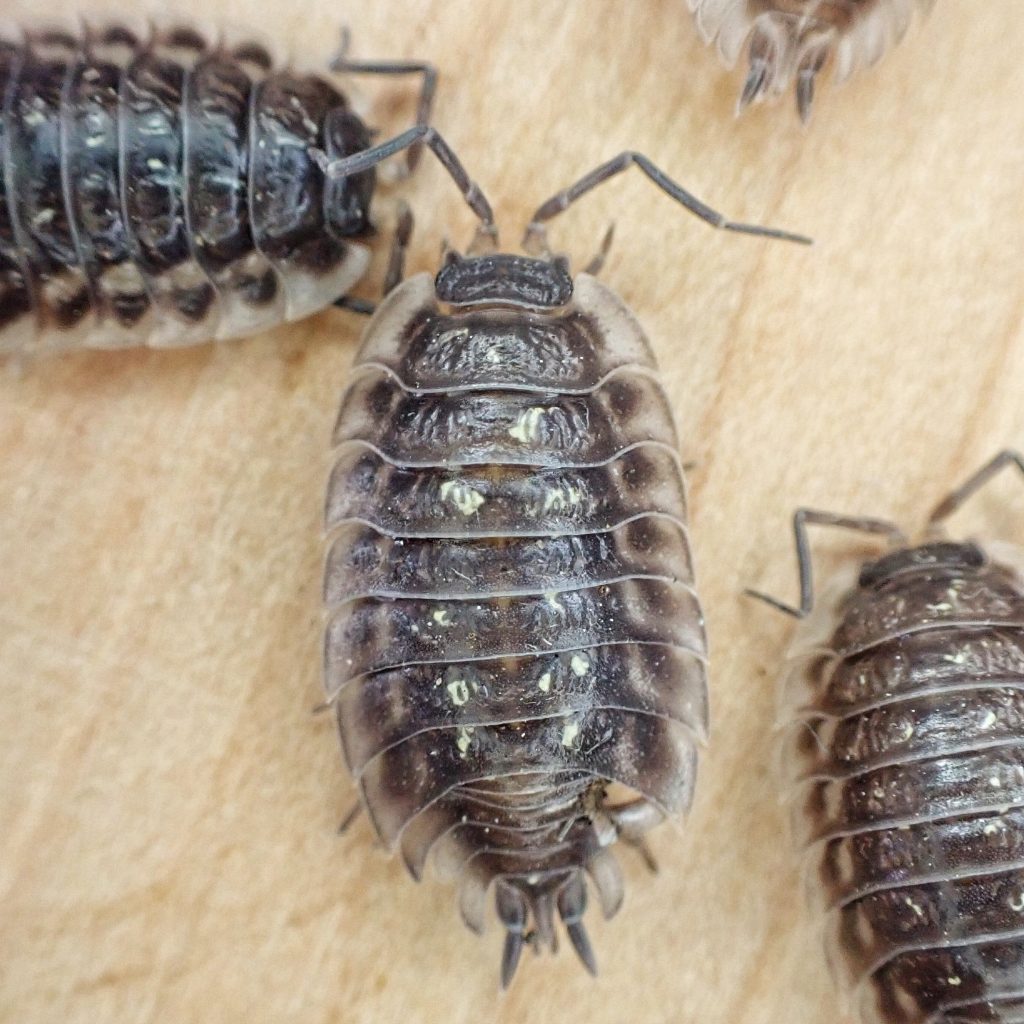
Wood lice are Crustaceans in the class Malacostracha and the order Isopoda. Terrestrial isopods (Oniscidea) made their first appearance in the fossil record in the late Cretaceous, about 110 million years ago (mya). But, because they lack a waxy epicuticle, they are not readily fossilized, and they were well established and taxonomically diverse in those first fossil records, so they are assumed to have developed on land some time during the Carboniferous epoch, possibly as far back as the time of Pangea (which began to break up 175 mya), since there are similar species on what are now separate continents. Oniscidea are one of the very few crustaceans (amphipods in the family Talitridae are another) which can live and reproduce completely independent of water. Land crabs (order Decapoda) require water for reproduction.
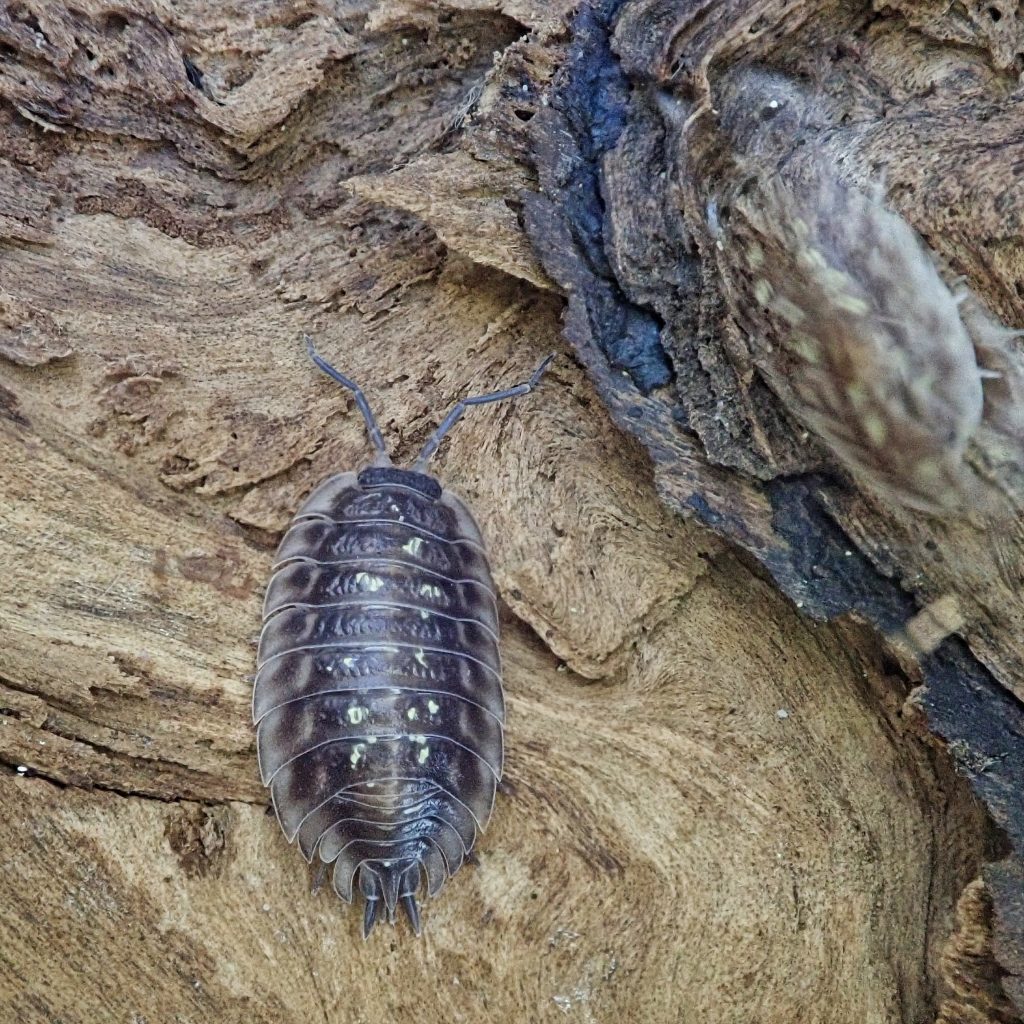
One of the primary obstacles for aquatic organisms trying to colonize the land is the matter of oxygenation. Oniscidea solved this by evolving pairs of very thin flaps on each segment of the inner part of the abdomen (pleon) called pleopods. These function as respiratory organs similar to gills, and the inner surface, called the endopodite, is where oxygen transfer happens. But, like gills, they need to be surrounded by a thin film of water in which oxygen can dissolve. As Melville Hatch said (‘The Chelifera and Isopoda of Washington and adjacent regions’; 1947) “Oniscoids are, in fact, only just able to survive under terrestrial conditions and this only as a result of their delicate response to conditions of proper humidity.” Basically this means that if there is too little water on the endopodite then the oxygen can’t dissolve, and if there is too much moisture the dissolved oxygen doesn’t make it to the membrane of the endopodite. Woodlice have also turned a waste disposal problem into something of a defense mechanism. Due to a need to conserve water, woodlice have evolved a system that turns nitrogenous waste into a gas, which is eliminated through the segments, giving them an ammonia taste that is apparently repulsive to animals that want to eat them whole.
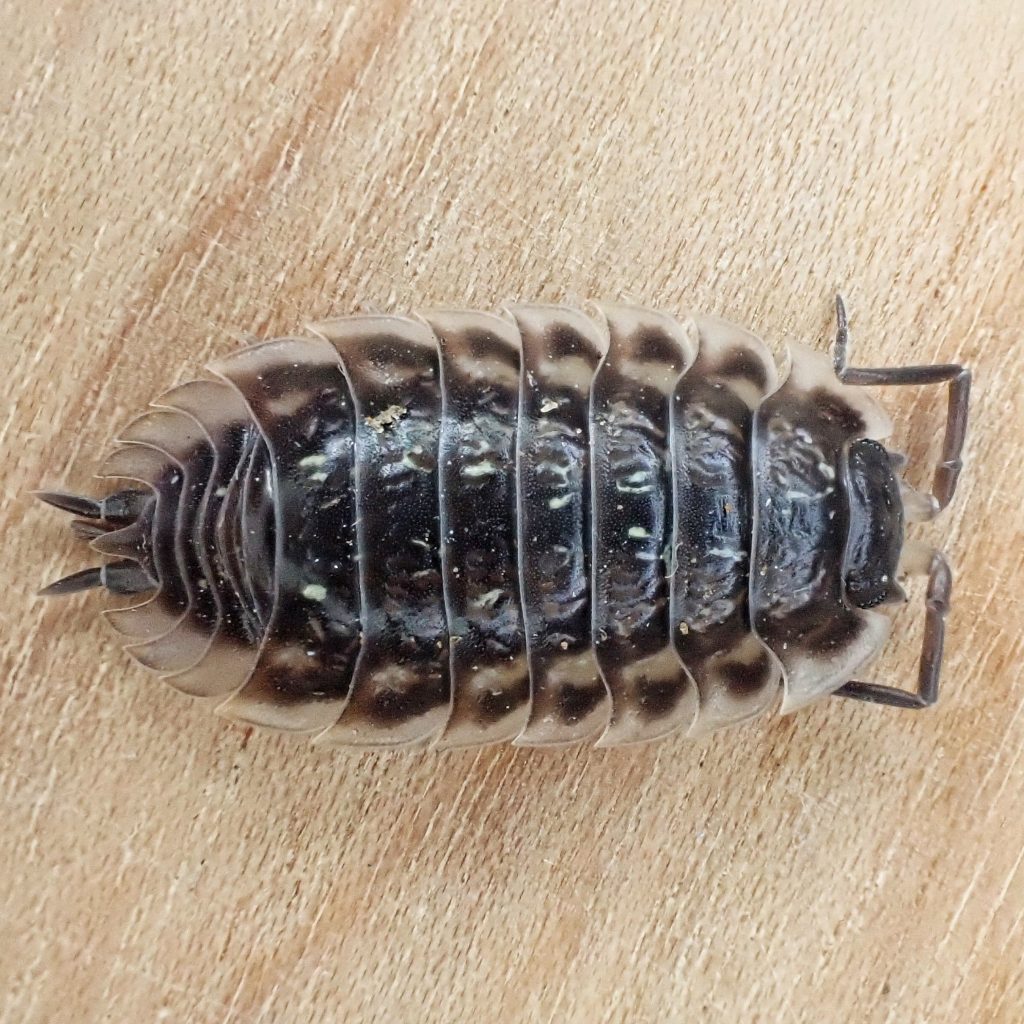
Another interesting feature of Oniscidae (and isopods in general) is the presence of a marsupium, a brood pouch wherein the female keeps eggs and hatchlings until they are ready to venture into the world and fend for themselves. The first moult happens within a day of leaving the marsupium, and woodlice continue to grow and moult throughout their lives. In fact mature females generate a new marsupium prior to each bout of reproduction, and then lose it during the succeeding moult. It should also be noted that, unusually for arthropods, each moult consists of two phases, with the rear portion losing its cuticle first and then, 2-3 days later, the fore parts finishing the moult. During each phase the animal is helpless for several hours.
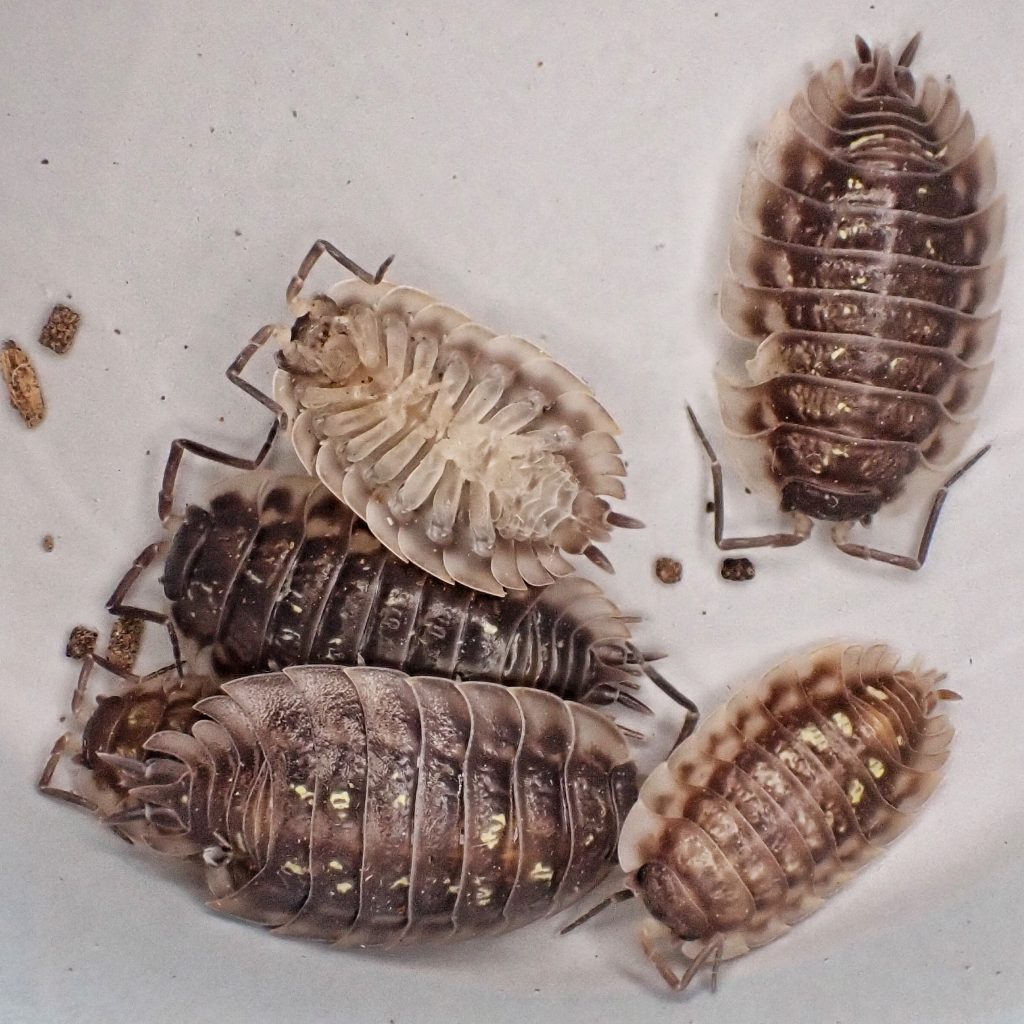
Many woodlice, including Oniscus asellus, also may reproduce asexually (parthenogenesis). This is expedited by Wolbachia bacteria, which can also alter the sex of the egg, and preclude fertilization of an egg by a sperm that is not infected by the particular species of Wolbachia. This is a bizarre and complicated issue, and rather than doing a poor job of explaining it myself I highly advise you good readers to learn about it yourself from Gerald N. Callahan’s fascinating blog post on the topic.
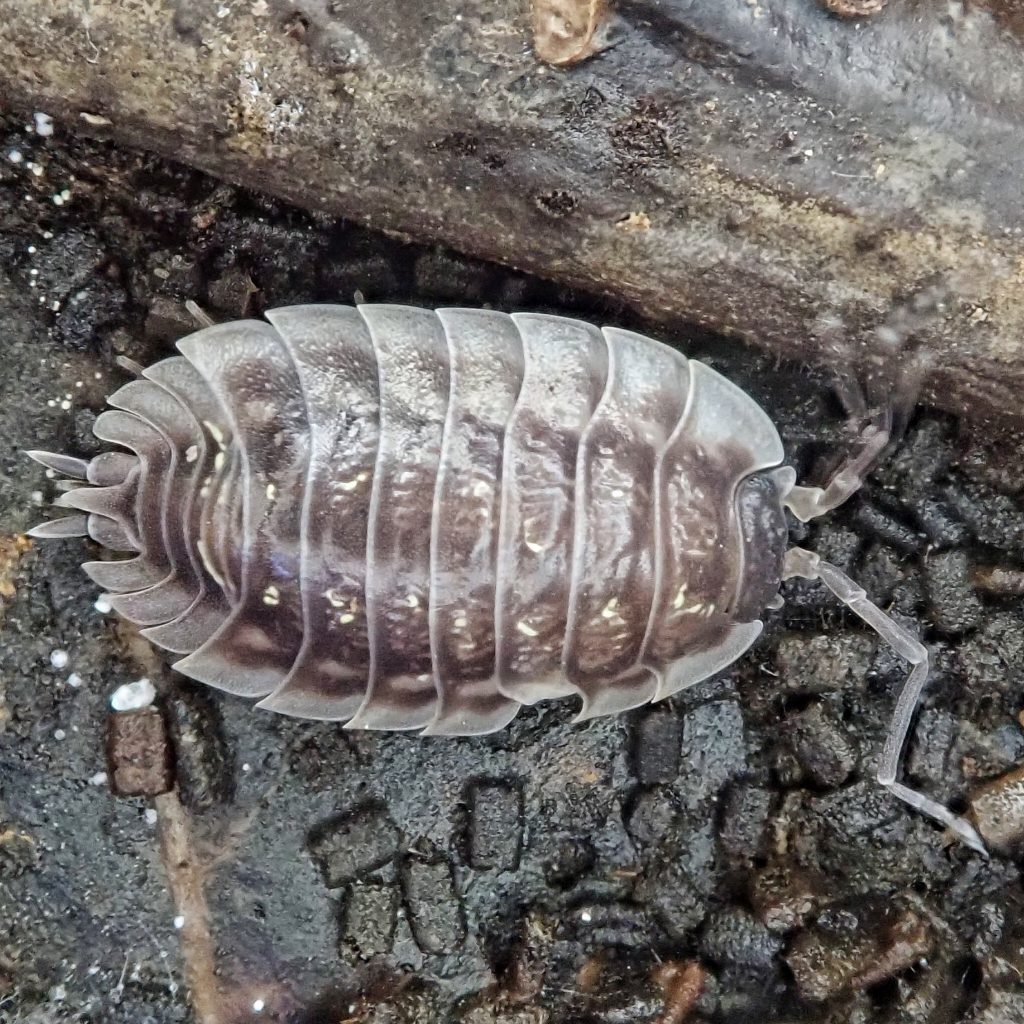
Woodlice have brought joy and entertainment to countless children the world over, as well as disgust and revulsion to bug-phobic adults, but they are actually harmless creatures that are vital middlemen in the decomposition process, and by virtue of storing heavy metals in their hepatopancreas, they are a valuable environmental pollution monitoring agent. In our region there may be as many as 50 species of Oniscidea, though the vast majority of them, like Oniscus asellus, are non-native. For the most part identifying woodlice to species will require magnification and a key, but oval, grey ones with a uniform margin are likely to be European Sowbugs if you flip one over and do not see white patches (their gills) in the middle of the ventral abdomen. These patches are readily visible to a close look with the naked eye, and they are lacking in Oniscus asellus, whose gills are the same light pinkish grey as the surrounding tissue.
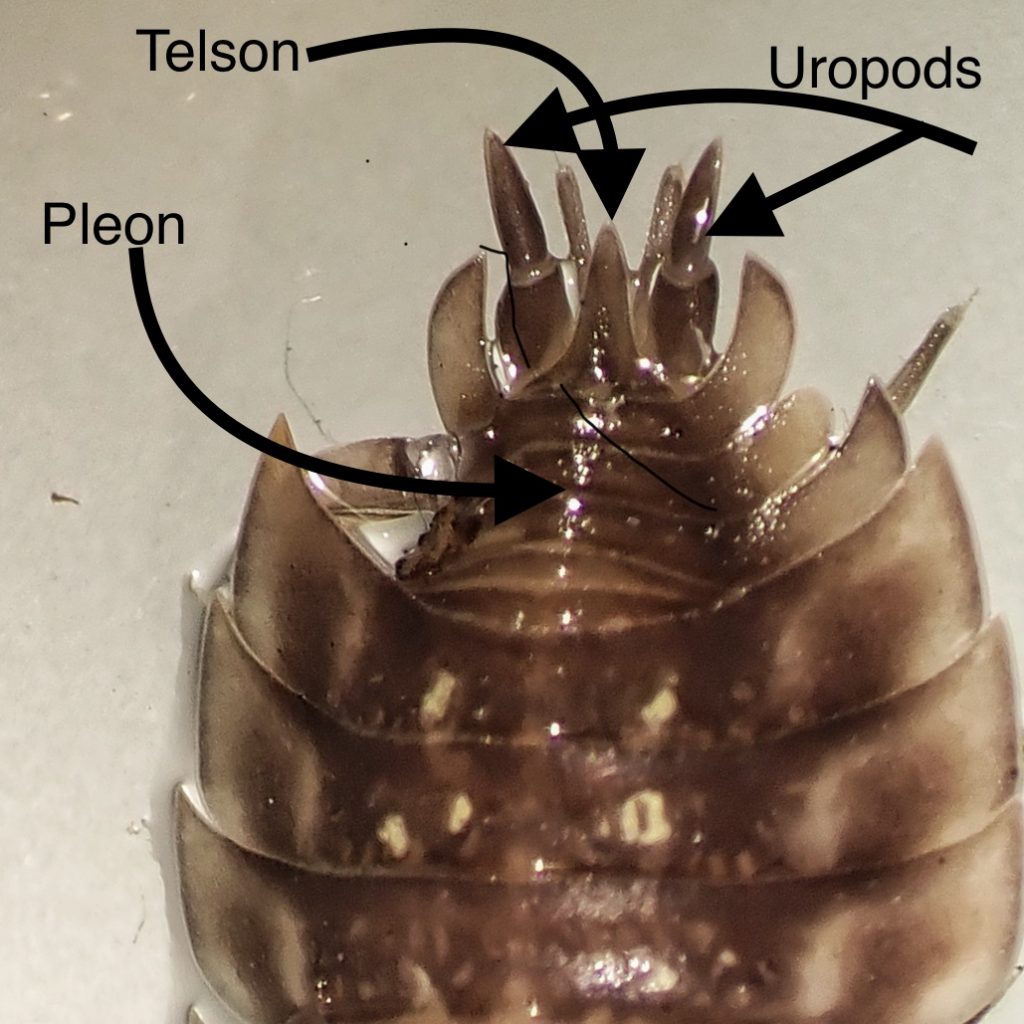
Description-Medium sized (5-16mm long by 2.5-6mm wide), dark grey (may be light grey to brown in immatures), flattened, oval woodlouse with small, irregular yellow spots on both sides of the middle of the dorsal surface (tergites), and much lighter near the margins; tergites mildly sculptured and shiny; uropods extend past the telson, which narrows abruptly and elongates to a point; antennal tip with 3 segments; lacks obvious white gills on pleon; first tergite surrounds the head; cannot roll into a ball.
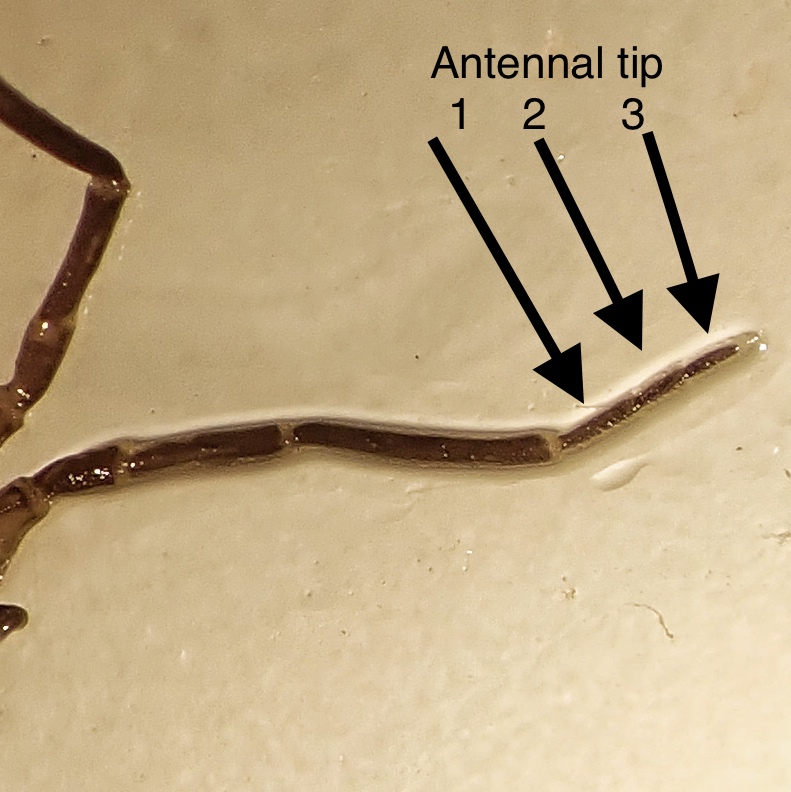
Similar species– Armadillidiidae roll into tight balls; Porcellionidae have 2 segmented antennal tip, and two pairs of white gills on the pleon; Trachelipodidae have 5 pairs of white gills and 2 segmented antennae; Ligiidae are narrower and the telson does not narrow abruptly and elongate; Trichoniscidae are narrower, head protrudes well past first tergite, and the pleon is much narrower than last tergite.
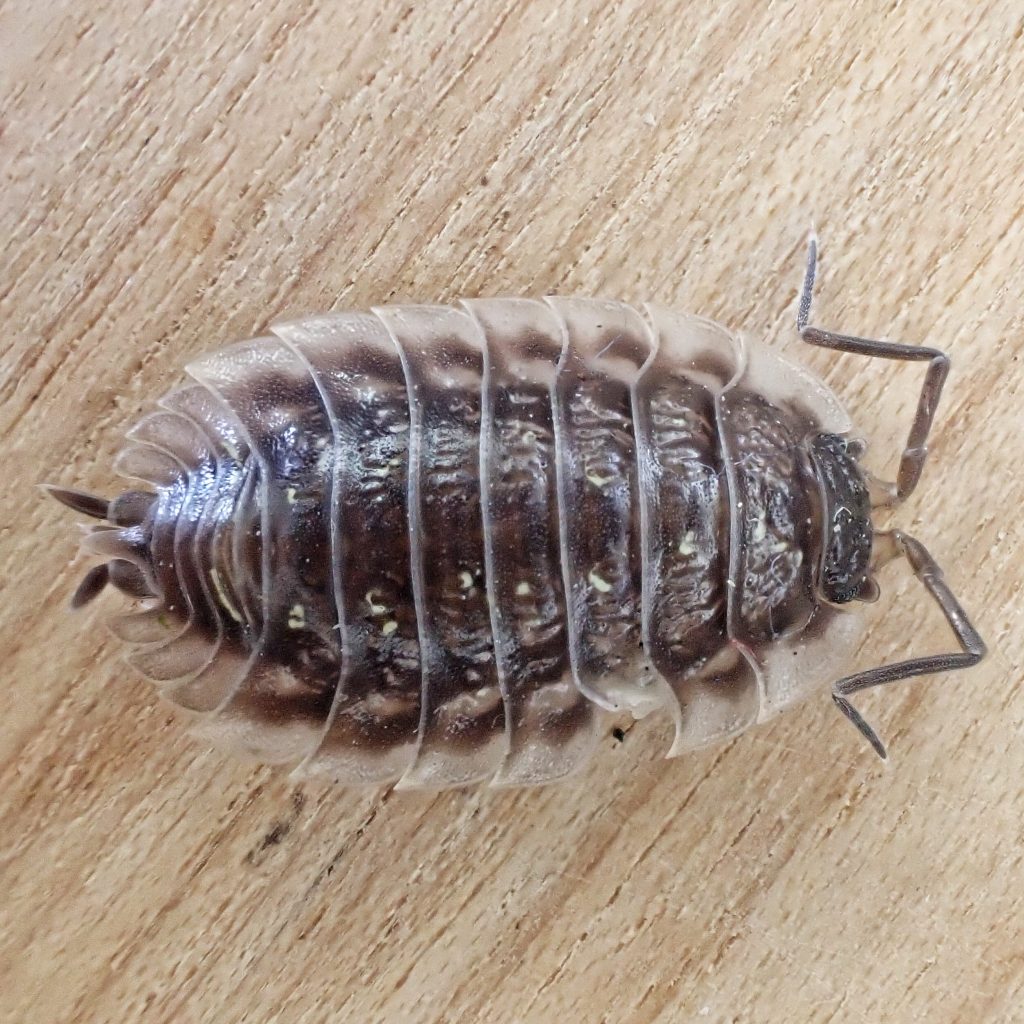
Habitat-High humidity areas, preferably with a high calcium content in the soil (to help build strong exoskeleton plates), under logs, woody debris, tree bark, leaf litter, and other moisture barriers; considered to be synanthropic, and thus often found in association with human dwellings.
Range-Native to west Central Europe and the British Isles, now nearly cosmopolitan; probably region wide in appropriate habitat in the Pacific Northwest.
Eats-Decaying organic material, dead plants, leaves, slime molds like Trichia varia and occasionally living plants, although Oniscus asellus is not usually considered to be a pest species.
Eaten by-Early instars are preyed upon by insectivores of all classes, but more mature woodlice are usually only eaten by beetles and other arthropods, including the spiders Dysdera crocata and Steatoda grossa.
Adults active-Year around, but during the coldest and driest times they are usually deep undercover.
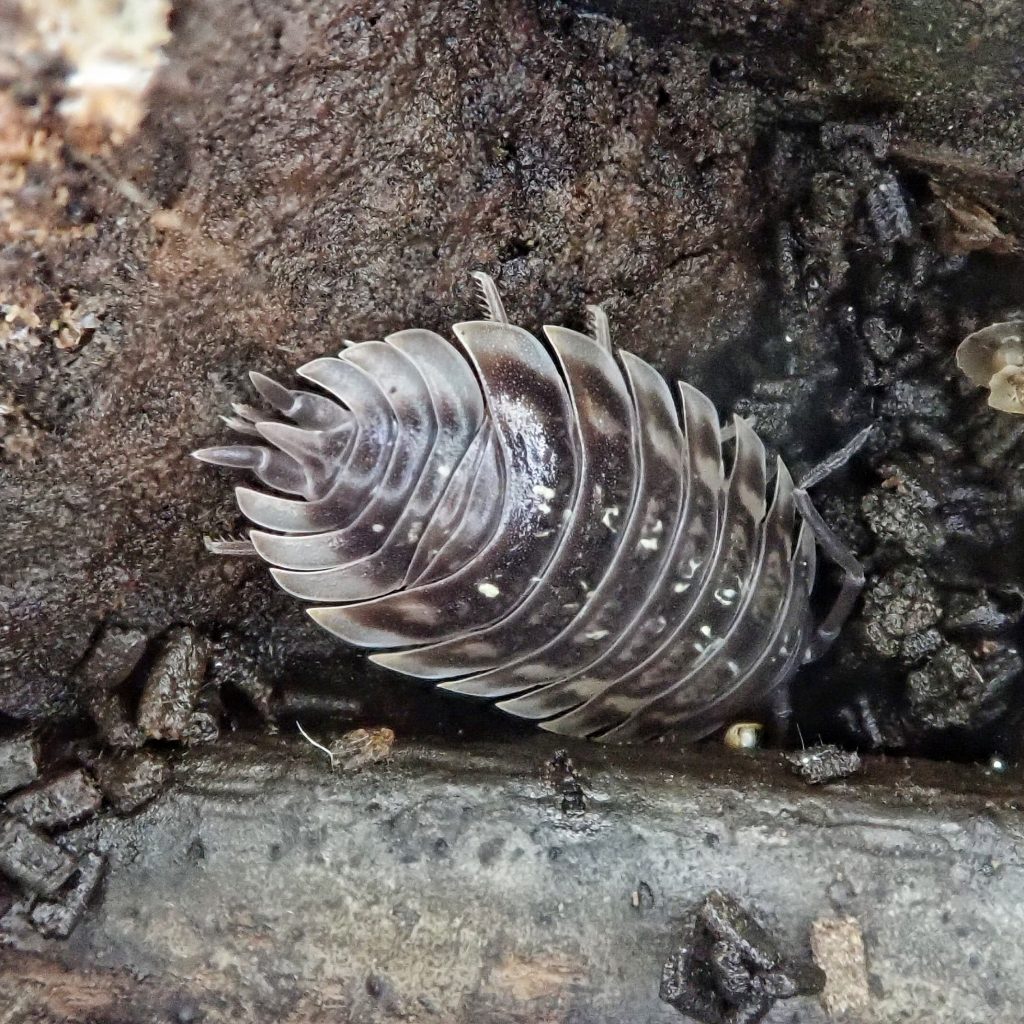
Life cycle-Breeds from late spring into early fall; may live over 5 years; after leaving the marsupium the first moult happens within a day; the next two moults happen at 2 week intervals, and successive moults at 3 week intervals until the 9th or 10th, after which they are more or less monthly until the following spring, and then 3-6 times per year for the remainder of their lives; breeding begins in the second or third year; Oniscus asellus usually has one brood during its first season of reproduction, 2 during the second season, and 1 during the third; sperm can be stored and utilized to fertilize a subsequent brood; also may reproduce asexually.
Etymology of names–Oniscus is from the Greek word for woodlice, which came from the Greek word for ‘a small ass’, and refers to their coloration. The specific epithet asellus carries on this theme, being the Latin word for ‘a little ass’. And by ‘ass’ they, of course, meant the equine beast of burden known to most Americans as a donkey.
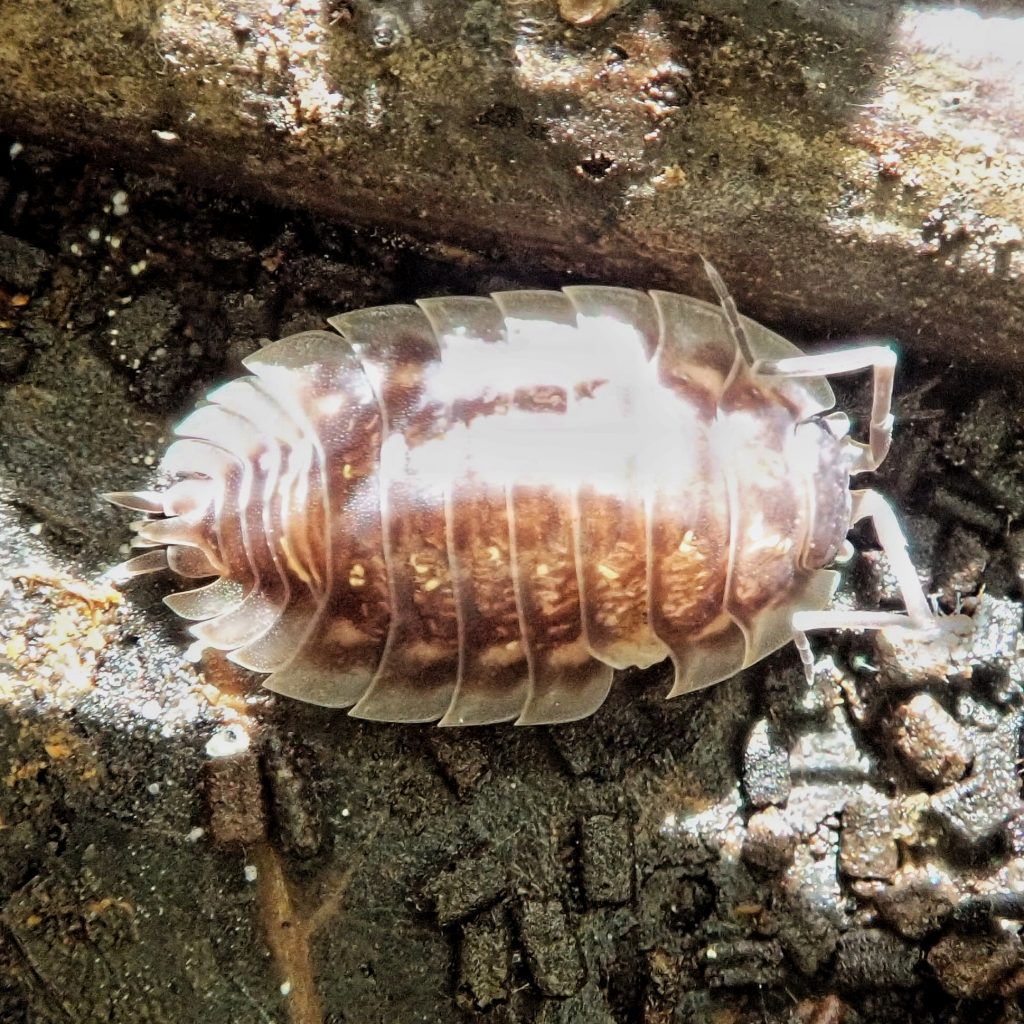
https://crawford.tardigrade.net/bugs/BugofMonth17.html
https://anhso.org.uk/wp-content/uploads/Fritillary/frit8-woodlice.pdf
https://bugguide.net/node/view/33847
http://www.the-piedpiper.co.uk/th11c.htm
http://www.eduwebs.org/bugs/sowbug.htm
https://zookeys.pensoft.net/article/24146/
https://upcolorado.com/about-us/news-features/item/3150-lousy-sex
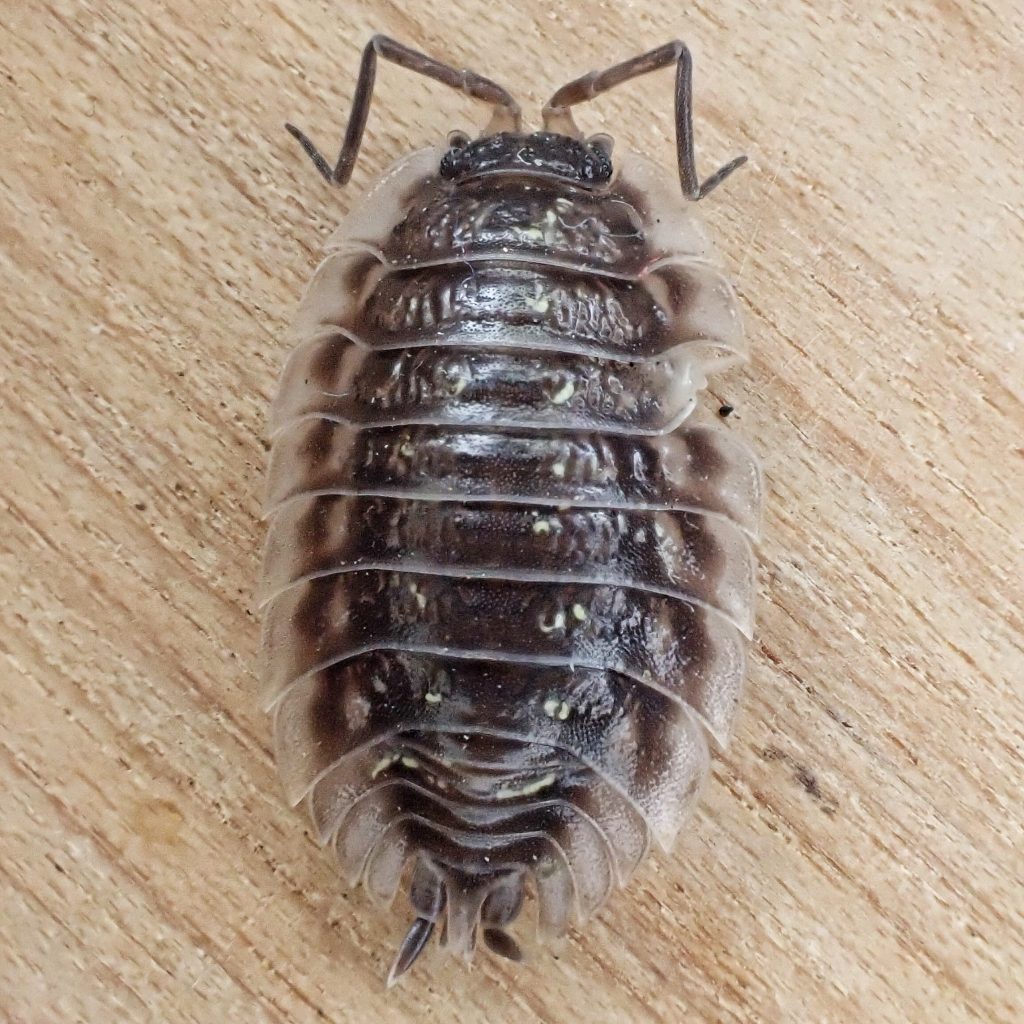
We called them potato bugs
I have heard that as a general name for woodlice, but couldn’t ascertain what species they referred to, or even whether it was applied to sowbugs or pillbugs, so I didn’t include it.
Daniel, still treasuring each of your well done posts on the life all around us. I have to admit I missed the boat in my life regarding entomology, a mistake that I am being enticed to correct, at least a bit, with your writings. Your macro-photography is really helpful. Would you consider including a small ruler of some type in a few of the photos. Though you include size in the description it would sometimes be helpful to correlate with images. I appreciate the aesthetics that may be involved with such a decision, but something to think about.
Thank you, Dwight! I do have a background with a 5mm grid. I use it for identification purposes. I’ll think about using some photos from that. I usually discard those for, as you said, aesthetic purposes.